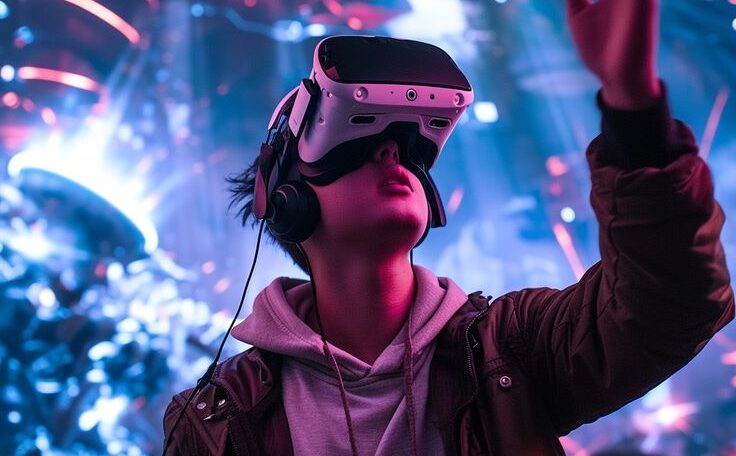
The gaming and virtual reality (VR) industries are constantly evolving, driven by advancements in technology that enhance user experiences and push the boundaries of what’s possible. One of the most significant technological advancements in recent years is the integration of 8K resolution into mobile gaming and VR. With its potential to revolutionize visual clarity and immersion, 8K resolution is set to impact these fields profoundly. This article explores the implications of 8K technology on mobile gaming and VR, highlighting its benefits, challenges, and future prospects.
Understanding 8K Resolution
8K resolution, with a pixel count of approximately 7680 x 4320 pixels, offers four times the detail of 4K resolution and sixteen times that of Full HD (1080p). This increased pixel density results in incredibly sharp and detailed visuals, which can significantly enhance both gaming and VR experiences.
Key Characteristics of 8K Resolution
- Pixel Density: 8K displays have an exceptionally high pixel density, making individual pixels nearly imperceptible. This contributes to a more immersive and lifelike visual experience.
- Color Accuracy: With improved color accuracy and vibrancy, 8K displays provide more realistic and dynamic color reproduction, which is crucial for both gaming and VR applications.
- Detail and Clarity: The higher resolution allows for finer details and textures, enhancing the realism of in-game environments and virtual worlds.
Impact of 8K Resolution on Mobile Gaming
1. Enhanced Visual Experience
One of the most immediate benefits of 8K resolution in mobile gaming is the enhancement of visual clarity. Games played on 8K screens will benefit from:
- Increased Detail: 8K resolution allows for more intricate textures and details, making game environments appear more realistic and immersive.
- Sharper Graphics: The higher pixel count reduces the visibility of jagged edges and improves the overall smoothness of graphics, providing a more polished and enjoyable gaming experience.
- Better Immersion: With improved visual fidelity, players can feel more immersed in the game world, as the graphics are closer to real life in terms of detail and clarity.
2. Improved Performance and Responsiveness
While 8K resolution demands significant processing power, it also drives improvements in gaming performance and responsiveness through:
- Enhanced GPU Capabilities: Modern GPUs are designed to handle high-resolution content more efficiently. As 8K resolution becomes more common, GPUs will continue to evolve to meet these demands, leading to better performance and smoother gameplay.
- Higher Frame Rates: With advancements in technology, 8K displays can support higher frame rates, contributing to a more fluid and responsive gaming experience. This is particularly important for fast-paced games where smooth movement is crucial.
3. Future-Proofing Gaming Devices
As gaming technology continues to advance, 8K resolution can future-proof mobile gaming devices by:
- Supporting Emerging Content: As more games and content are developed in higher resolutions, having an 8K display ensures that devices are compatible with the latest media formats.
- Enhancing Longevity: Devices with 8K displays are likely to remain relevant and competitive in the market for a longer period, as they can handle new and evolving content standards.
4. Challenges and Considerations
Despite its benefits, integrating 8K resolution into mobile gaming comes with several challenges:
- Power Consumption: 8K displays consume more power, which can affect battery life. Gaming devices will need to incorporate larger batteries or more efficient power management solutions to address this issue.
- Heat Generation: The increased processing power required for 8K resolution generates more heat, which can impact device performance and comfort. Effective cooling solutions are necessary to manage heat output.
- Content Availability: While 8K gaming offers improved visuals, the availability of 8K content is currently limited. Gaming developers will need to create and optimize games for 8K resolution to fully leverage the technology.
Impact of 8K Resolution on Virtual Reality
1. Enhanced Immersion
In VR, the benefits of 8K resolution are even more pronounced due to the close proximity of the display to the user’s eyes:
- Reduced Screen Door Effect: The “screen door effect,” where users see a grid-like pattern of lines separating pixels, is minimized with 8K resolution. This creates a more immersive and seamless VR experience.
- Improved Realism: Higher resolution enhances the realism of virtual environments, making them appear more lifelike and engaging. Users can experience greater detail and depth, which enhances the overall sense of presence in VR.
2. Enhanced User Experience
8K resolution improves the VR user experience by:
- Sharper Textures and Details: The increased pixel density allows for finer textures and more detailed virtual objects, improving the overall quality and realism of VR content.
- Greater Visual Comfort: Higher resolution displays reduce eye strain and fatigue by providing clearer and more precise visuals. This contributes to a more comfortable and enjoyable VR experience.
3. Challenges in VR
Implementing 8K resolution in VR presents unique challenges:
- Performance Requirements: VR systems require high frame rates to maintain a smooth and comfortable experience. The processing power needed to drive 8K resolution at high frame rates is significant, posing challenges for hardware developers.
- Latency and Motion Sickness: High-resolution VR requires minimal latency to prevent motion sickness and discomfort. Ensuring that 8K displays can deliver high frame rates with low latency is crucial for a positive VR experience.
- Hardware Constraints: The integration of 8K resolution into VR headsets requires advancements in display technology and processing power. Compact and lightweight designs must accommodate the demands of high-resolution displays without compromising comfort.
4. Future Prospects for 8K in VR
As technology evolves, several developments may enhance the impact of 8K resolution in VR:
- Advancements in Display Technology: Innovations in display technologies, such as OLED and MicroLED, will continue to improve the performance and efficiency of 8K VR displays.
- Optimized Software and Algorithms: Enhanced software and algorithms will play a role in optimizing 8K content for VR, addressing challenges related to performance and visual quality.
- Wider Content Availability: As 8K content becomes more prevalent, VR experiences will benefit from a broader range of high-resolution media, further enhancing immersion and realism.
Conclusion
The integration of 8K resolution into mobile gaming and VR represents a significant leap forward in visual technology, offering unparalleled clarity and immersion. For mobile gaming, 8K resolution enhances visual detail, performance, and future-proofs devices against evolving content standards. In VR, the benefits of 8K resolution are even more pronounced, providing a more immersive and realistic experience while addressing challenges related to performance and comfort.
As the technology continues to develop, 8K resolution is poised to redefine the gaming and VR landscapes, driving innovation and delivering extraordinary experiences to users. By addressing the challenges and leveraging the benefits, the gaming and VR industries will continue to push the boundaries of what’s possible and create new opportunities for immersive entertainment.



